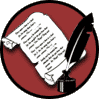%%USERNAME%% %%ACCWORDS%% %%ONOFF%% |
 | No ratings.
A recent merger produced an unusual place where humans can live. |
| In 2247, humanity’s first interstellar colony ship, the Pioneer, reached a system 12 light-years from Earth, targeting a strange world cataloged as X-47b. The planet, soon named Toxam, was a lumpy, peanut-shaped body with two distinct lobes joined by a narrow isthmus. Its atmosphere was breathable, its crust rich with minerals, and its gravity varied: 0.8g in one lobe, 1.2g in the other, and a disorienting 0.5g at the isthmus. The colonists—scientists, engineers, and pioneers—didn’t know Toxam’s origin: it was born from the merger of two planets, Tomax and Xamot, which collided less than a million years ago. Tomax and Xamot, once Earth-sized worlds locked in a slow orbital dance, had spiraled together over eons, their gentle collision forming Toxam’s dual lobes. The Tomax lobe was fertile, with rolling valleys; the Xamot lobe was rugged, packed with rare isotopes. The isthmus, a warped scar of their union, pulsed with geological instability. The merger was too ancient for the colonists to have witnessed, but its legacy defined their world, from its uneven gravity to its restless core. Settlements took root on both lobes. In the Tomax lobe, where lighter gravity (0.8g) made life airy, colonists built sprawling, domed habitats, their gardens thriving in oxygen-rich air. Tomaxans, as they called themselves, grew tall and slight, their culture leaning toward art and innovation. In the Xamot lobe, heavier gravity (1.2g) shaped stockier, stronger settlers who carved cliffside strongholds and mined isotopes. Xamotans prided themselves on grit and discipline. The isthmus, known as the Bridge, was a low-gravity (0.5g) frontier where movement felt like drifting. It became a bustling trade hub, its markets alive with anti-grav sleds and merchants battling gravity sickness. Toxam’s quirks bred division. Tomaxans, nimble and idealistic, clashed with Xamotans, who saw their heavy-world strength as proof of superiority. The Bridge folk, a mix of both, were distrusted, their knack for exploiting the planet’s oddities making them rich but marginalized. Tensions flared over resources—Tomaxans needed Xamot’s isotopes for tech, while Xamotans coveted Tomax’s fertile soil. The planet itself seemed alive, its core—a fusion of Tomax’s and Xamot’s—triggering quakes and magnetic surges. At the Bridge, crystalline growths hummed with strange energy, puzzling researchers. In 2275, a Tomaxan geologist, Lira, and an Xamotan miner, Torv, met during a Bridge quake. Studying the crystals, they uncovered electromagnetic echoes—geological “memories” of Tomax and Xamot’s ancient skies, their slow collision, and Toxam’s birth. The discovery reshaped the colonies’ view: their world was young, a living symbol of unity from division. The crystals, possibly a proto-intelligent network disrupted by the merger, could store and share data. By 2300, Toxam’s colonists embraced their planet’s dual nature. Tomaxan and Xamotan cities blended lightweight domes with sturdy stone, linked by crystal-powered networks that shared knowledge across lobes. The Bridge, once divisive, became a cultural core, its low gravity inspiring floating art and hybrid traditions. Toxam, the peanut planet, was more than humanity’s first colony—it was a lesson in harmony, its lumpy shape and shifting gravity proof that even worlds could merge and flourish. |